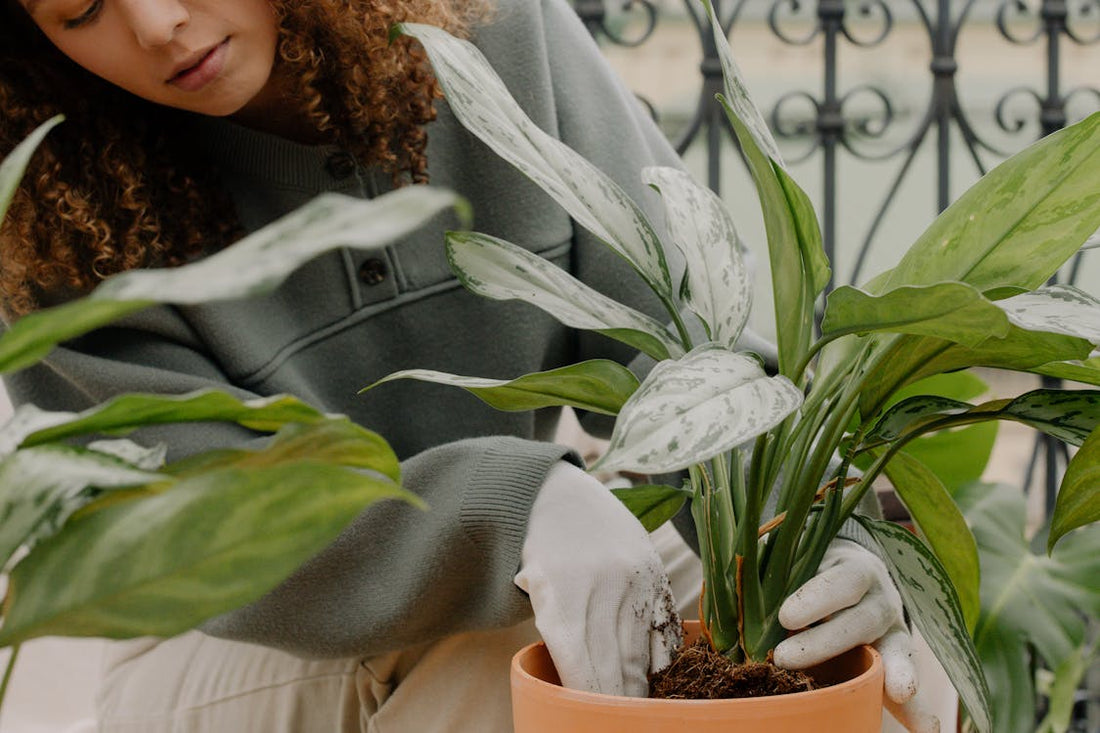
How and Why to Repot a Plant Upon Arrival
Share
When you receive a new plant, especially via shipping, it can happen that the plant or flower feels 'loose' in the growing pot. This is not a reason to panic, but a normal consequence of factors such as temperature differences, shipping time, and the size and weight of the plant. In this blog we explain why this happens and, more importantly, why it is essential to repot your plant upon receipt.
Why does my plant feel loose in the pot?
Plants can be exposed to many different conditions during the shipping process. Some causes of a 'loose' plant in the pot can be:
• Temperature differences : During transport, the plant may experience different temperatures. These fluctuations can cause the roots to temporarily retract or the potting soil to become less compact.
• Movement during transport : Despite careful packaging, the plant may shift slightly during shipping. Especially if the plant is heavier or larger, the roots may no longer be firmly in the potting soil.
• The size and weight of the plant : Larger plants often have more complex root systems. If the roots are not sufficiently supported by the pot or soil, they may not be as firmly in the pot.
While this is all normal, it is important to give your plant the best possible start upon receipt by immediately repotting it in fresh soil. This will not only help the plant recover from its journey, but will also allow it to quickly adapt to its new environment.
Why repotting is so important after shipping
Repotting provides your plant with a solid foundation to grow and adapt to its new environment. Here are some key reasons why you should repot your plant upon arrival:
1. Recovery from the Shipping Process : Plants can experience stress during travel due to constant movement, temperature changes, and limited nutrients in the potting soil. Repotting your plant gives it a chance to settle into fresh, rich soil and recover from any stress.
2. Fresher, more nutritious soil : The potting soil that plants are shipped in is often primarily intended for the nursery and can dry out or lose nutrients during the journey. By repotting your plant in fresh soil, you provide the roots with new nutrients that are essential for healthy growth.
3. Room for root development : Growing pots in which plants are shipped are often smaller and more limited in space. This can hinder root growth. When repotting, choose a slightly larger pot so that the roots can develop freely. This encourages the plant to grow stronger.
4. A more stable base : As mentioned earlier, the plant may feel loose in the pot after shipping. By repotting it firmly and packing the soil around the roots, you give the plant a more stable base. This allows it to absorb water better and anchor itself firmly in its new home.
How do you repot a plant after receiving it?
Repotting a plant is simple, but there are a few key steps you can take to ensure your plant gets the most out of its new environment:
1. Choose the right pot : Choose a pot that is about 2-4 cm larger in diameter than the plant's current pot. Make sure the pot has good drainage holes so that excess water can drain away.
2. Use quality potting soil : Invest in a high-quality potting soil. Depending on the type of plant you have, specific potting soil may be needed (for example, cactus soil for succulents, or orchid soil for orchids).
3. Carefully remove the plant from the nursery pot : Hold the plant gently at the base and gently pull on the pot so as not to damage the roots. If the roots are stuck to the pot, you can gently tap the pot to loosen the plant.
4. Loosen the roots : Check the roots and carefully remove old, dry soil. If the roots are close together, you can gently separate them so they have room to spread out in the new pot.
5. Place the plant in the new pot : Place the plant in the center of the new pot and carefully fill it with potting soil. Press the soil lightly around the roots, but make sure that the soil is not too compact, so that the roots have enough breathing space.
6. Water : Water your plant immediately after repotting. This helps the roots establish themselves in the new soil and ensures that the plant gets off to a healthy start.
When should you not repot a plant?
Although in most cases it is beneficial to repot a plant upon receipt, there are some exceptions. For example:
• Flowering plants : It is often best to wait to repot until flowering has finished, as the plant needs extra energy to form flowers during flowering.
• Plants in dormancy : Some plants have a dormant period in the winter, during which they are less active. During this period, it may be better to wait with repotting until the growing season starts again.
Conclusion: repotting for a healthy start
Receiving a new plant is always an exciting time, but to ensure your plant thrives, repotting it after you receive it is a crucial step. Whether you have a large houseplant or a small flowering plant, repotting in fresh, nutritious soil will ensure that your plant recovers quickly from its journey and starts strong in its new life in your home or garden.
Want to learn more about caring for new plants? Check out our other blog posts on optimizing plant growth, watering, and tips for caring for specific plant species.
